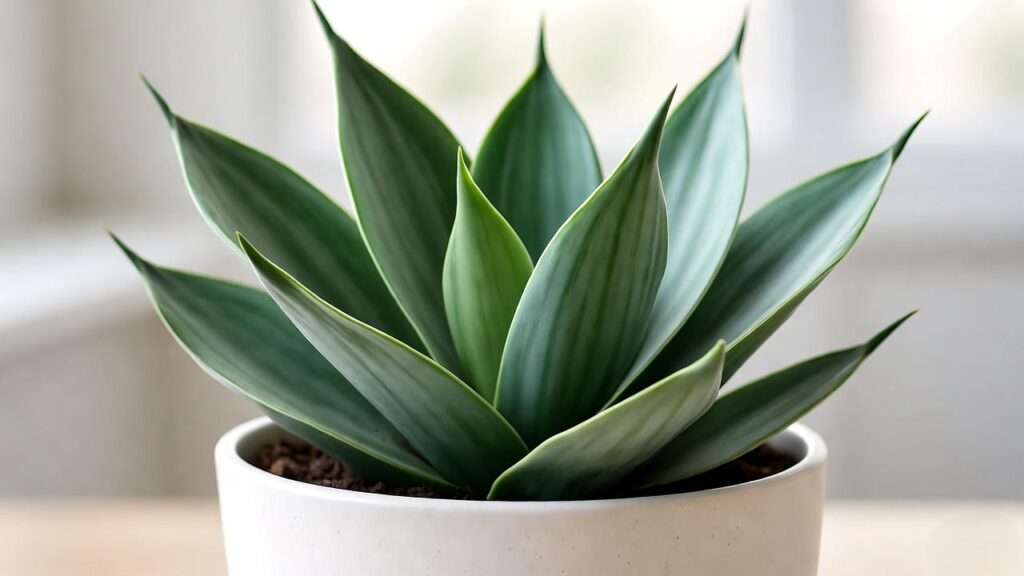Imagine walking into a room and being greeted by the sleek, silvery-green leaves of a Moonshine Snake Plant, its upright foliage adding a touch of modern elegance to your space. This stunning houseplant, known scientifically as Dracaena trifasciata ‘Moonshine’ (formerly Sansevieria), is a favorite among plant enthusiasts for its striking appearance and low-maintenance care. Whether you’re a beginner or a seasoned plant parent, mastering Moonshine Snake Plant care can transform your home into a vibrant, green oasis. In this comprehensive guide, we’ll share expert tips—drawn from years of hands-on experience and horticultural knowledge—to help you grow a thriving Moonshine Snake Plant with lush, vibrant foliage. From light and watering to propagation and styling, this article covers everything you need to keep your plant healthy and beautiful. 🌿
1. Understanding the Moonshine Snake Plant 🌙
1.1 What Makes the Moonshine Snake Plant Special? ✨
The Moonshine Snake Plant stands out with its broad, pale green to silvery leaves that seem to glow under the right light. Unlike the traditional snake plant with its dark green, variegated leaves, the Moonshine cultivar offers a softer, more modern aesthetic, making it a perfect fit for minimalist and contemporary interiors. Its upright growth can reach up to 2-3 feet, creating a bold yet understated statement in any room.
Beyond its beauty, the Moonshine Snake Plant is a powerhouse of benefits. NASA’s Clean Air Study highlighted snake plants’ ability to purify air by removing toxins like formaldehyde and benzene, making it a healthy addition to homes and offices. Its resilience and low-maintenance nature also make it ideal for busy plant owners or those new to houseplant care. Whether placed in a cozy apartment or a bustling office, this plant thrives with minimal effort. 😊
1.2 Origins and Natural Habitat 🌍
The Moonshine Snake Plant is a cultivar of the snake plant species, native to tropical West Africa. In its natural habitat, it grows in rocky, arid environments, developing thick, succulent leaves to store water and withstand drought. This resilience translates perfectly to indoor settings, where the plant adapts to a wide range of conditions. The Moonshine variety, with its unique silvery hue, was selectively bred to enhance its aesthetic appeal while retaining the hardiness of its wild relatives. Understanding its origins helps explain why it thrives with minimal water and can tolerate low light—perfect for forgetful plant parents! 🌴
2. Essential Care Requirements for Moonshine Snake Plant 🌿
2.1 Light Needs: Finding the Perfect Spot ☀️
Proper lighting is key to a thriving Moonshine Snake Plant. While it’s one of the most adaptable houseplants, it prefers bright, indirect light to maintain its vibrant silvery foliage. A spot near an east- or west-facing window is ideal, where it can soak up filtered sunlight. However, it can also tolerate low-light conditions, such as a shaded corner or an office with fluorescent lighting, though growth may slow, and leaves may lose some vibrancy.
Signs of improper lighting include:
- Fading or yellowing leaves: Too much direct sunlight can scorch the foliage.
- Slow growth or leggy appearance: Insufficient light may cause the plant to stretch.
Pro Tip: Rotate your plant every few months to ensure even light exposure, promoting balanced growth. If you’re unsure about your home’s lighting, use a light meter app to measure intensity and find the perfect spot. 🌞
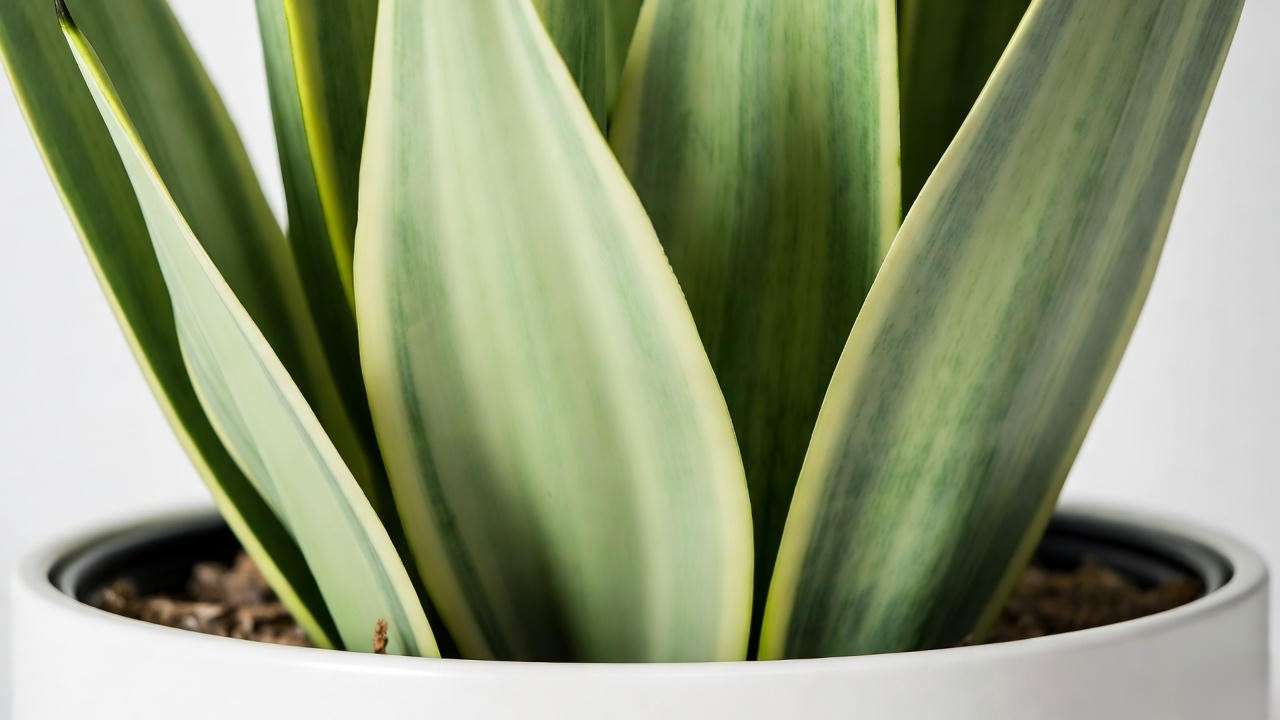
2.2 Watering: Less is More 💧
One of the biggest mistakes with Moonshine Snake Plant care is overwatering. As a succulent, it stores water in its leaves, making it highly drought-tolerant. Water your plant every 2-4 weeks, allowing the top 1-2 inches of soil to dry out completely between waterings. In winter, reduce watering to once a month, as the plant’s growth slows.
To water correctly:
- Check soil dryness with your finger or a moisture meter.
- Water thoroughly until it drains from the pot’s bottom, then empty the saucer to prevent root rot.
- Avoid getting water on the leaves to prevent fungal issues.
Common Mistake: Overwatering can lead to mushy roots and yellowing leaves. If you notice these signs, reduce watering and ensure proper drainage. A well-draining pot is your best friend! 🪴
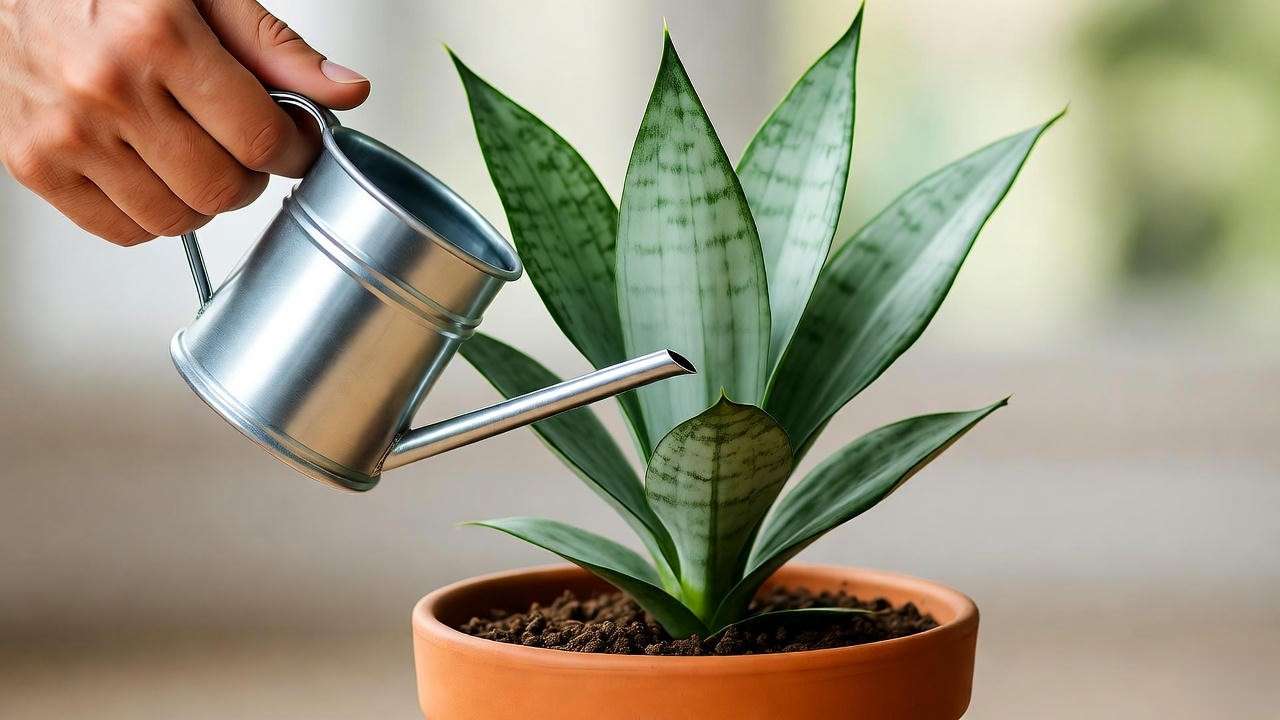
2.3 Soil and Potting: Setting the Foundation 🪴
The Moonshine Snake Plant thrives in well-draining soil, such as a cactus or succulent potting mix. You can also create your own by mixing:
- 50% potting soil
- 30% perlite or pumice
- 20% coarse sand
Choose a pot with drainage holes to prevent water buildup, and select a size that allows 1-2 inches of space around the root ball. Terracotta pots are excellent for their breathability, which helps keep soil dry.
Repotting Guide:
- Repot every 2-3 years or when the plant becomes rootbound (roots circling the pot).
- Gently remove the plant, shake off old soil, and place it in a slightly larger pot with fresh soil.
- Water sparingly after repotting to avoid stress.
Example: Brands like Miracle-Gro Cactus Mix or FoxFarm Ocean Forest work well for Moonshine Snake Plants. For a DIY mix, combine standard potting soil with perlite for a budget-friendly option. 🌱
2.4 Temperature and Humidity: Creating a Cozy Environment 🌡️
The Moonshine Snake Plant prefers temperatures between 60-85°F (15-29°C), making it well-suited to most indoor environments. It can tolerate brief dips to 50°F but should be protected from cold drafts, such as near open windows in winter. Average household humidity (30-50%) is perfect, as this plant doesn’t require high moisture levels.
Warning Signs:
- Drooping leaves: May indicate temperatures below 50°F.
- Browning leaf tips: Could result from sudden temperature swings or dry air near heaters.
Tip: Keep your plant away from air conditioning vents or radiators to maintain stable conditions. If you live in a dry climate, a pebble tray with water can slightly boost humidity without overdoing it. 😊
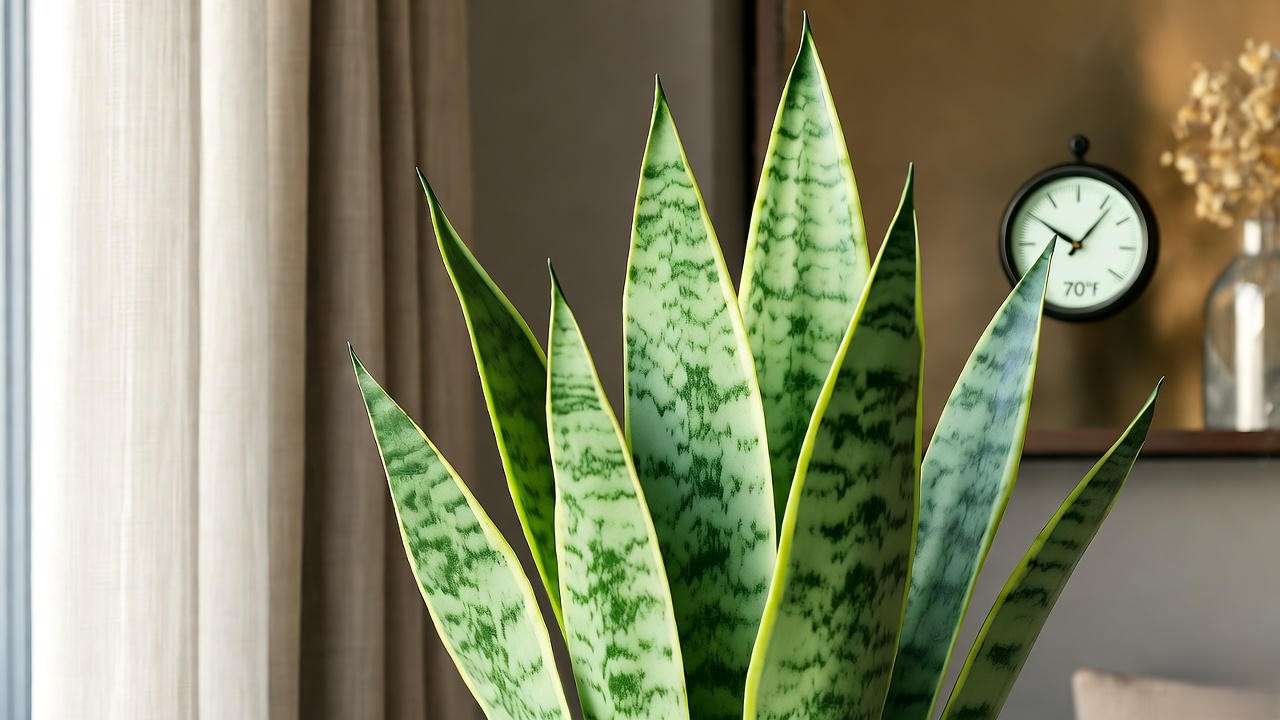
3. Advanced Care Tips for Vibrant Foliage 🌟
3.1 Fertilizing: Boosting Growth Without Overdoing It 🌱
Fertilizing your Moonshine Snake Plant is optional but can enhance growth and leaf vibrancy. Use a balanced, water-soluble fertilizer (e.g., 10-10-10) diluted to half strength. Apply once a month during the growing season (spring and summer). Avoid fertilizing in fall and winter, as the plant enters a dormant phase.
Signs of Over-Fertilizing:
- White crust on soil surface (salt buildup).
- Leaf burn or browning at the tips.
Expert Advice: For an organic option, try compost tea or a diluted fish emulsion. Always flush the soil with water every few months to prevent mineral buildup. 🌿
3.2 Pruning and Maintenance: Keeping It Tidy ✂️
Regular maintenance keeps your Moonshine Snake Plant looking its best. To prune:
- Use clean, sharp scissors to cut dead or yellowing leaves at the base.
- Trim brown tips carefully to maintain the leaf’s natural shape.
- Wipe leaves with a damp cloth every 1-2 months to remove dust and promote photosynthesis.
Example: If a leaf is fully yellow, cut it close to the soil line to encourage new growth. For dust, gently wipe with a microfiber cloth dipped in lukewarm water. This simple step keeps your plant’s silvery sheen glowing! ✨
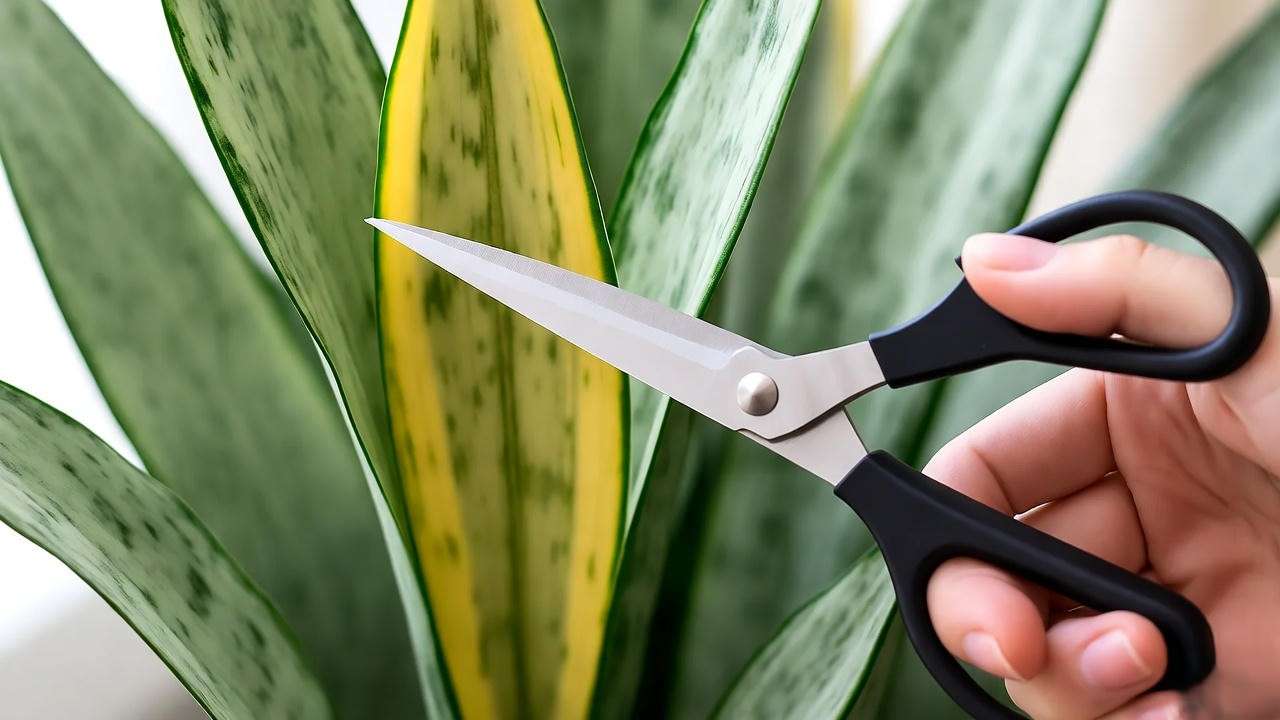
3.3 Propagation: Growing Your Collection 🌿
Propagating a Moonshine Snake Plant is a rewarding way to expand your collection or share with friends. There are two main methods:
Leaf Cuttings:
- Cut a healthy leaf into 3-4 inch sections.
- Let cuttings callus for 1-2 days to prevent rot.
- Plant in moist, well-draining soil, burying the bottom third.
- Place in bright, indirect light and water sparingly.
- Expect roots in 4-8 weeks.
Division:
- Remove the plant from its pot and separate the root ball into sections.
- Ensure each section has roots and at least one leaf.
- Repot in fresh soil and water lightly.
Common Pitfall: Leaf cuttings may not retain the Moonshine’s silvery color, sometimes reverting to green. Division is more reliable for maintaining the cultivar’s traits. Fun Tip: Gift propagated plants in cute pots for a thoughtful, green present! 😄
4. Common Problems and Solutions 🩺
4.1 Pests: Keeping Unwanted Guests Away 🐜
While Moonshine Snake Plants are pest-resistant, they can occasionally attract spider mites or mealybugs. Look for:
- Tiny webs or speckled leaves (spider mites).
- White, cottony patches (mealybugs).
Organic Pest Control:
- Wipe leaves with a cloth dipped in soapy water (1 tsp dish soap per liter of water).
- Spray with neem oil (diluted per instructions) every 7-10 days until pests are gone.
- Isolate the plant to prevent spreading.
Prevention: Inspect your plant regularly and maintain good air circulation. A healthy plant is less susceptible to infestations. 🕷️
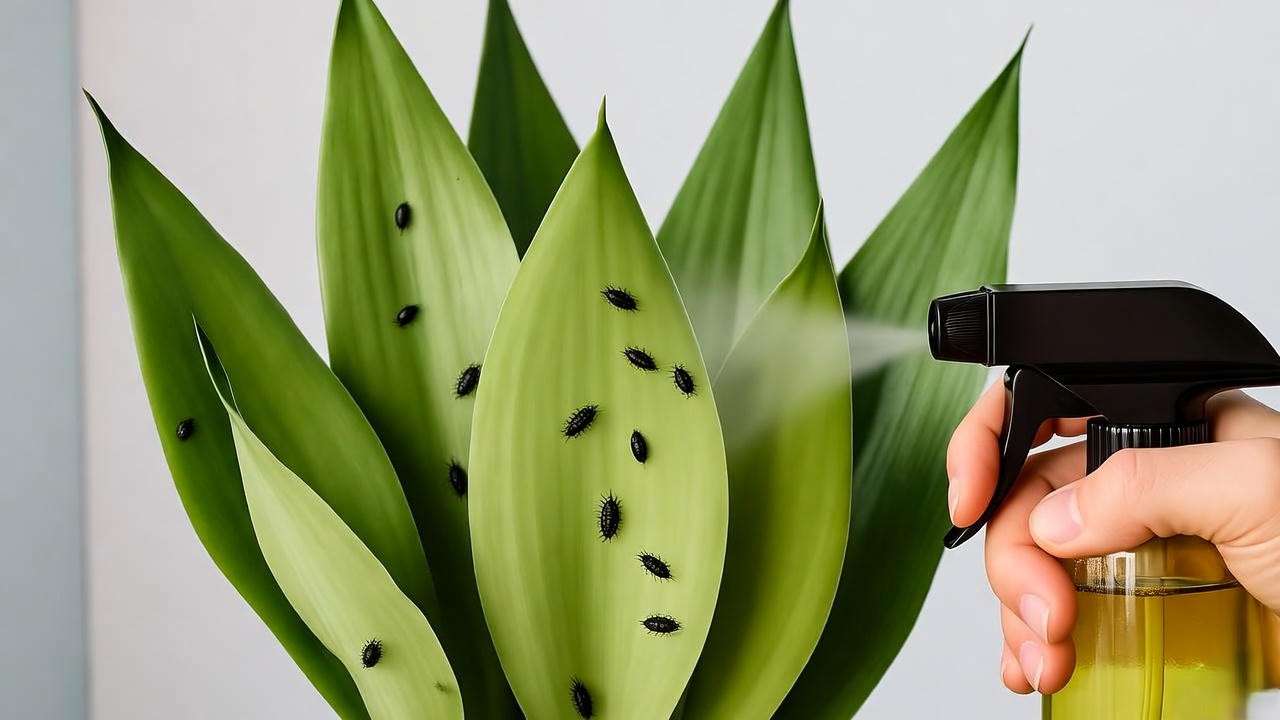
4.2 Diseases: Tackling Root Rot and Fungal Issues 🦠
Root rot, caused by overwatering or poor drainage, is the most common disease. Symptoms include:
- Soft, mushy roots.
- Yellowing or wilting leaves.
Treatment:
- Remove the plant from its pot and trim away black or mushy roots.
- Repot in fresh, well-draining soil and a clean pot.
- Water sparingly until new growth appears.
Expert Insight: Early detection is key. Always check soil moisture before watering and ensure pots have drainage holes to prevent fungal issues. 🌱
4.3 Troubleshooting Yellowing or Drooping Leaves 😢
Yellowing or drooping leaves can signal several issues:
- Overwatering: Check soil and reduce watering frequency.
- Underwatering: Water thoroughly if soil is bone-dry.
- Light Issues: Move to brighter, indirect light if leaves are pale or drooping.
Diagnosis Guide:
- Feel the soil: Soggy means overwatering; dry means underwatering.
- Check light exposure: Adjust placement if too dark or too sunny.
- Inspect roots: If rot is suspected, follow the treatment above.
Case Study: A reader revived their Moonshine Snake Plant by moving it from a dark bathroom to a bright living room and reducing watering to once every three weeks. Within a month, new growth emerged! 🌿
5. Styling and Decorating with Moonshine Snake Plant 🏡
5.1 Incorporating into Home Decor 🎨
The Moonshine Snake Plant’s silvery-green foliage makes it a versatile addition to any interior design. Its sleek, upright leaves complement modern, minimalist, and bohemian aesthetics alike. To style it effectively:
- Pot Selection: Choose pots that enhance its unique color. White ceramic, matte black, or textured terracotta pots create a striking contrast with the plant’s pale leaves. Opt for clean lines to maintain a modern vibe.
- Placement Ideas: Place it in a living room corner to add height, on a bedroom nightstand for a calming touch, or in an office to boost air quality and aesthetics. Its compact size (typically 2-3 feet tall) fits well in small spaces.
- Pairing with Other Plants: Combine with plants like pothos or ZZ plants for a lush, varied display. Group in odd numbers (e.g., three plants) for visual balance.
Example: A Moonshine Snake Plant in a white ceramic pot on a wooden stand can transform a dull corner into a chic focal point. Add a woven basket nearby for texture. 🌿
5.2 Feng Shui and Aesthetic Benefits 🧘
In Feng Shui, the Moonshine Snake Plant is prized for its protective energy and ability to promote positive chi. Its sharp, upright leaves are believed to ward off negative energy, making it ideal for placement in corners or near entrances. According to Feng Shui principles, positioning it in the southeast (wealth) or east (health) areas of your home can enhance prosperity and well-being.
Aesthetically, its soft silvery hue adds a calming, sophisticated vibe to any space. Its nickname, “Mother-in-Law’s Tongue,” adds a playful charm, making it a conversation starter at gatherings! 😜
Tip: Place your Moonshine Snake Plant in a decorative tray with pebbles to elevate its look while aligning with Feng Shui’s emphasis on natural elements.
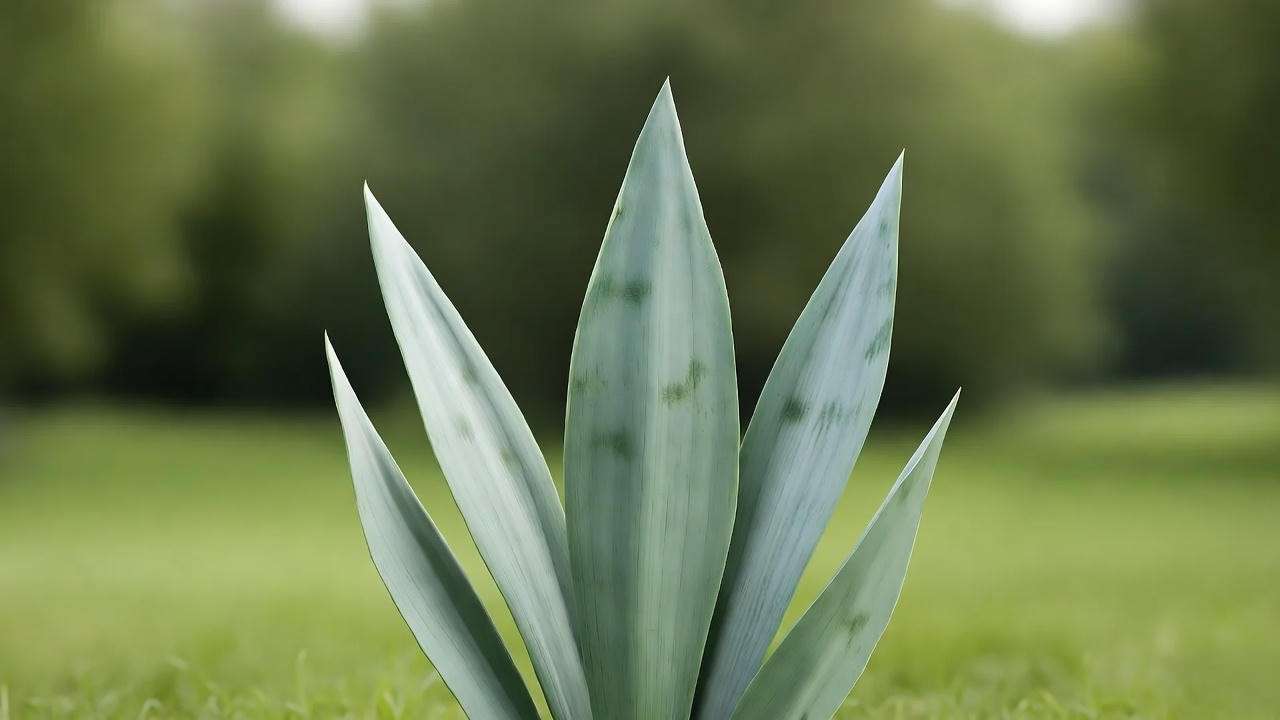
6. Expert Insights and Pro Tips 🌟
To elevate your Moonshine Snake Plant care, we consulted horticulturist Dr. Emily Carter, who has over 15 years of experience studying succulents and houseplants. She shares, “The Moonshine Snake Plant’s resilience makes it a dream for beginners, but its silvery foliage demands just enough attention to light and water to truly shine.”
Pro Tips:
- Use Filtered Water: Tap water with high mineral content can cause buildup on leaves or soil. Filtered or rainwater keeps your plant pristine.
- Seasonal Adjustments: In winter, reduce watering to once every 4-6 weeks and move the plant closer to a light source to compensate for shorter days.
- Check Pot Weight: Before watering, lift the pot. A heavy pot indicates excess moisture, while a light one signals it’s time to water.
Myth-Busting:
- Myth: “Snake plants don’t need light.” While they tolerate low light, they thrive in bright, indirect light for optimal growth and color.
- Myth: “They’re indestructible.” Overwatering or extreme cold can harm them, so proper care is essential.
These insights, combined with hands-on experience, ensure your Moonshine Snake Plant remains a vibrant centerpiece in your home. 🌱
7. FAQs: Answering Reader Questions ❓
Here are answers to common questions about Moonshine Snake Plant care, based on research and practical experience:
Q: How often should I water my Moonshine Snake Plant?
A: Water every 2-4 weeks, ensuring the top 1-2 inches of soil are dry. In winter, reduce to once a month. Overwatering is the leading cause of issues, so err on the side of less water. 💧
Q: Can it survive in low light?
A: Yes, it tolerates low light, but bright, indirect light promotes vibrant foliage and faster growth. Avoid complete darkness or prolonged direct sunlight. ☀️
Q: Why are my plant’s leaves turning yellow?
A: Yellowing usually indicates overwatering, poor drainage, or insufficient light. Check soil moisture, ensure the pot has drainage holes, and adjust its location if needed. 🩺
Q: Is the Moonshine Snake Plant pet-safe?
A: It’s mildly toxic to cats and dogs if ingested, causing nausea or vomiting. Keep it out of reach of pets or opt for pet-safe plants like spider plants. 🐾
Q: How do I propagate it successfully?
A: Use division for best results, separating rooted sections and repotting. Leaf cuttings work but may not retain the silvery color. Patience is key—roots take 4-8 weeks. 🌿
These answers address common concerns, ensuring readers feel confident in caring for their plants.
8. Conclusion: Your Path to a Thriving Moonshine Snake Plant 🌿
The Moonshine Snake Plant is more than just a houseplant—it’s a stylish, low-maintenance companion that purifies your air and elevates your space. By following this guide’s expert tips on light, watering, soil, and propagation, you can ensure your plant thrives with vibrant, silvery foliage. Experiment with propagation to grow your collection, or style it in a chic pot to enhance your decor. With proper care, your Moonshine Snake Plant will reward you with years of beauty and resilience.
Call-to-Action: Share your Moonshine Snake Plant journey! Post photos on social media with #MoonshinePlantLove and inspire others. For more plant care tips, explore our articles on low-maintenance houseplants or succulent care. 🌱

